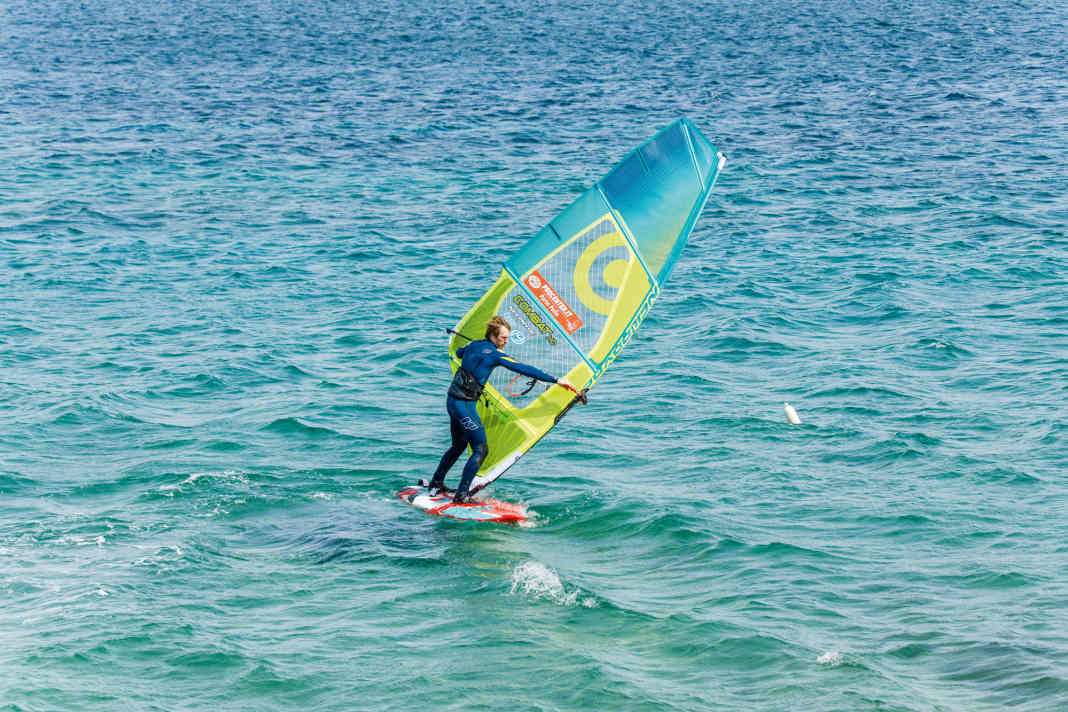





Changing the side of the sail at the front around the mast is one of the absolute sticking points of a normal tack - especially on small boards. With the helicopter tack, also known as a helitack, this is not necessary - which is why worldcuppers also use the good old helitack on freestyle and wave boards from time to time. Light winds of between five and ten knots are ideal for practising. As with any manoeuvre, the following applies: with a large board, e.g. a longboard or a windSUP, the success rate increases significantly, especially at the beginning. Sails with camber are an absolute no-go for practising!
Like every tack, the helitack is a turn towards the wind that is initiated by luffing. The characteristic quick flip of the sail at the end gives this tacking manoeuvre its name. The manoeuvre can be roughly divided into four phases: Anluvium phasewith the luffing up into the wind. Apexin which the luffing motion changes to a downward motion and the baking motion. The actual Baking journeyt, where you stand on the leeward side of the sail and the final Sailing shifts.
We explain the Helitack step by step in the gallery above!
Crucial point: Timing at the apex
Fast tack and helitack often fail due to timing. If the board has not yet reached the apex of the turn before the side change or the downwind movement of the sail, the second part of the manoeuvre may not work. Therefore, make sure to let the board turn completely into the wind during the upwind phase. This is the case when the speed of the board is close to zero and the lower leech of the sail touches your shin.
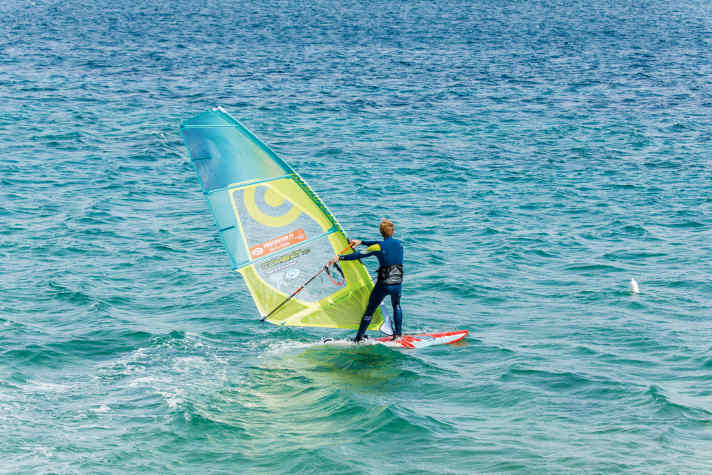
Crucial point: Checking the back pressure in the baking process
Anyone who has ever tried backing knows the problem of being pushed backwards into the water by the sail. The cause is easy to spot: If you push into the sail with your back hand (picture below right, back arm stretched), this is similar to a sealing movement. The counter-pressure increases and the mast rises.
If, on the other hand, the sail remains open while backing - the sail arm is bent and rests only loosely on the boom, the mast arm is stretched out and holds the mast at a distance - the sail floats almost weightlessly on the wind (right-hand picture).
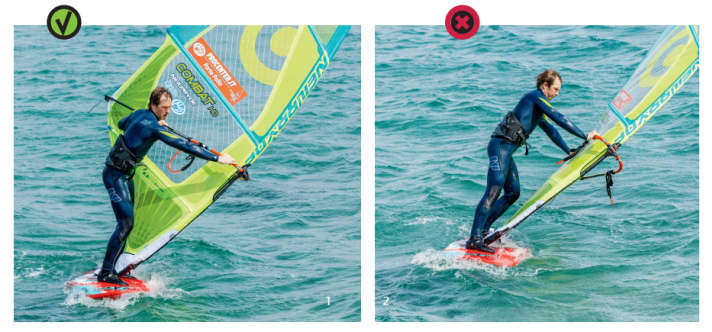
Crucial point: Sailing shifts
The final rotation of the sail ends the forecastle turn, gives the helicopter tack its name and represents the last stumbling block of the manoeuvre. During the preceding backstroke, it is important to keep the mast at a distance with the mast arm extended so as not to be pushed backwards by the board. However, if you let your sail rotate/flip with a long mast arm, you will inevitably end up downwind on the sail:
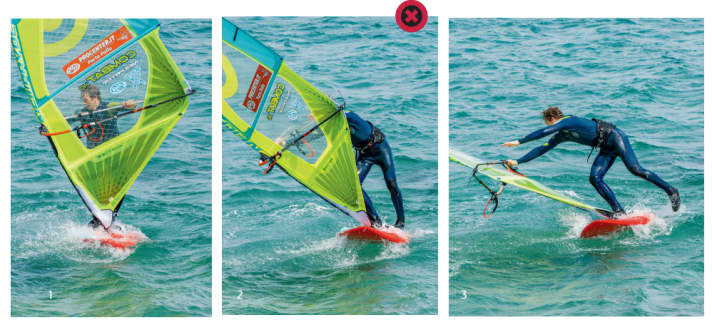
Therefore, as soon as the sail rotates, bring the mast back upright - the mast arm pulls the sail towards the body:
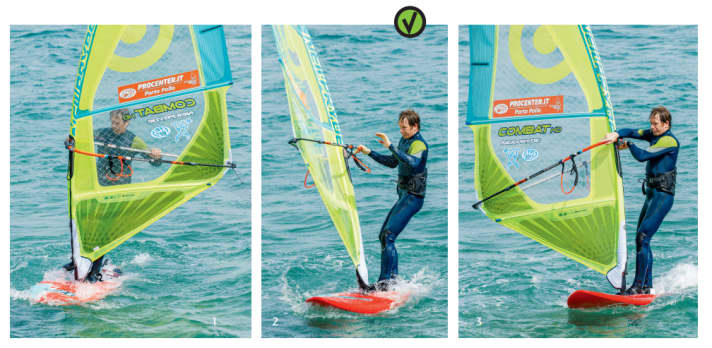
The Helitack in video
In the following clip, we show you all the key points of the Helitack. You can find many more videos on manoeuvres, planing or topics relating to windsurfing equipment regularly on the "surf" YouTube channel - click here!
